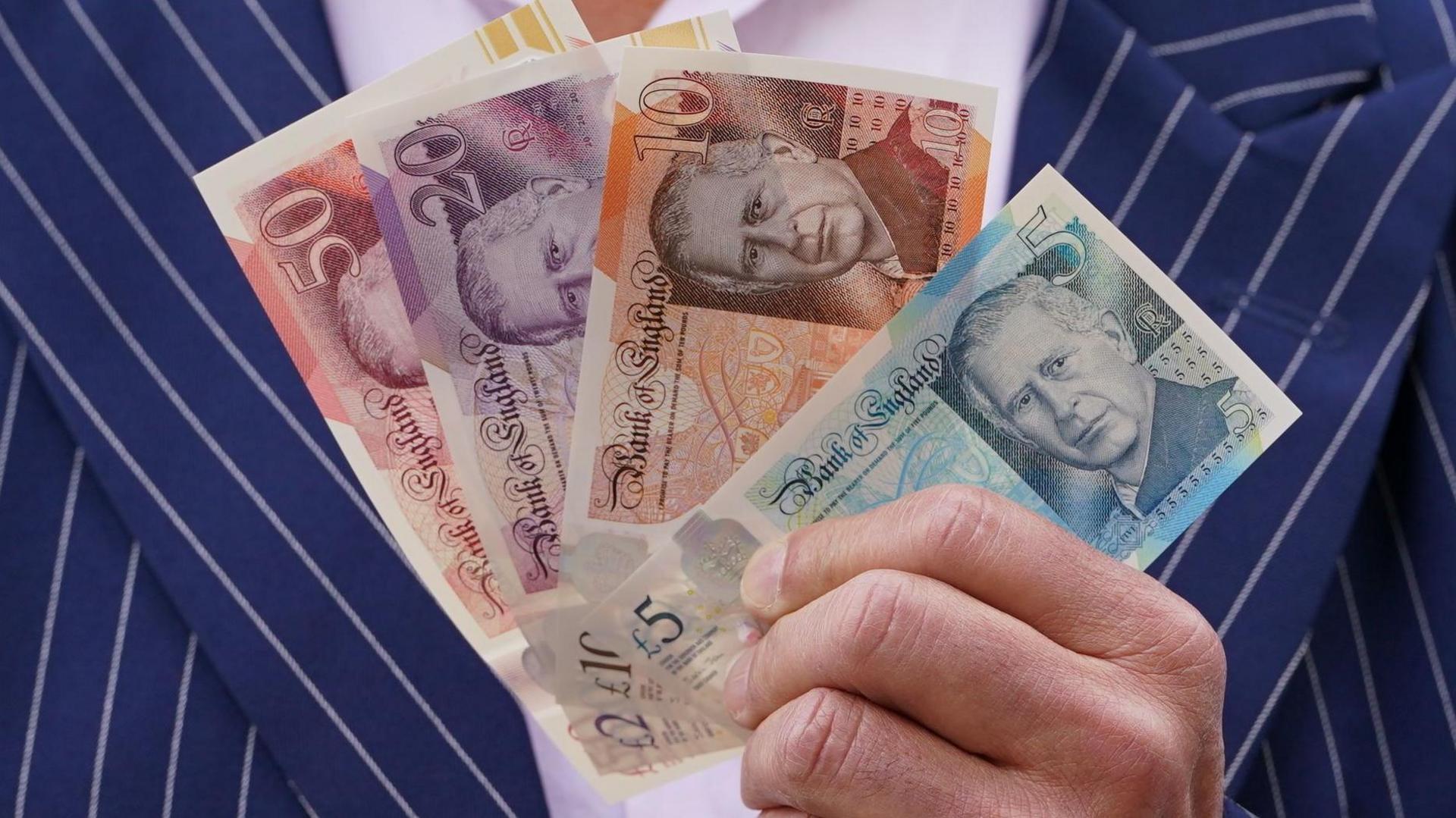What did cash in the UK used to look like?

On Wednesday banknotes with the King's face on them will enter circulation in England and Wales - though it might be a while before you see them. They'll only be printed to replace worn bank notes featuring the late Queen Elizabeth to reduce the environmental impact of the change. But which other notes and coins have been replaced in the UK?
- Published
More on money:
- Published13 October 2023
- Published17 February 2020
Paper £20 and £50 notes were replaced to more durable plastic ones in 2020. The old versions officially stopped being legal tender in 2022 - this means they were no longer accepted as forms of currency. The newer £20 and £50 notes feature artist JMW Turner and mathematician Alan Turing.
The 'round pound' coin (pictured on the left) was replaced with the now standard 12-sided coin (on the right) in 2017. The first artwork featured on the reverse of the 12-sided coin is based on a design made by 15-year-old school pupil David Pearce, who won a competition. According to the Royal Mint - the official maker of coins for the UK - the old circular pound was replaced because it was easier to make fake copies of it. The Royal Mint say that around one in thirty round pound coins were fakes back in 2017.
But before the £1 coin, there used to be a £1 note! The Bank of England, which is the central bank in the UK responsible for producing notes, record that this was first introduced way back in 1797. The note was updated in various different formats, but began to be gradually replaced by the pound coin in 1983.
This is the shilling, a coin that was used in the UK back before a process known as 'decimalisation'. Up until the 1970s, UK currency used to be much more complicated, with pounds made up of 20 shillings, and shillings themselves worth 12p. To simplify this, the government introduced the current system in which £1 would be worth 100 pennies. The shilling carried on circulating until 1990, as it was worth the same as the new 5p.
This rare Welsh coin from the 18th Century was known as an Anglesey penny or 'Druid penny'. It was made in Anglesey by a copper mining company, and was technically more of a token which could be exchanged for an official penny coin at full value. According to research by the University of Exeter, it was made locally and given to workers as there was a shortage of official coins throughout early Britain.
The farthing (pictured on the right, next to a one penny coin) began to circulate in the 13th Century and were worth a quarter of an old penny. According to the Royal Mint, its name and value comes from when pennies were cut into fours, a process known as 'fourthing' or farthing. That means that 960 farthings would have made up the old pound! The coin stopped being used in 1961.
